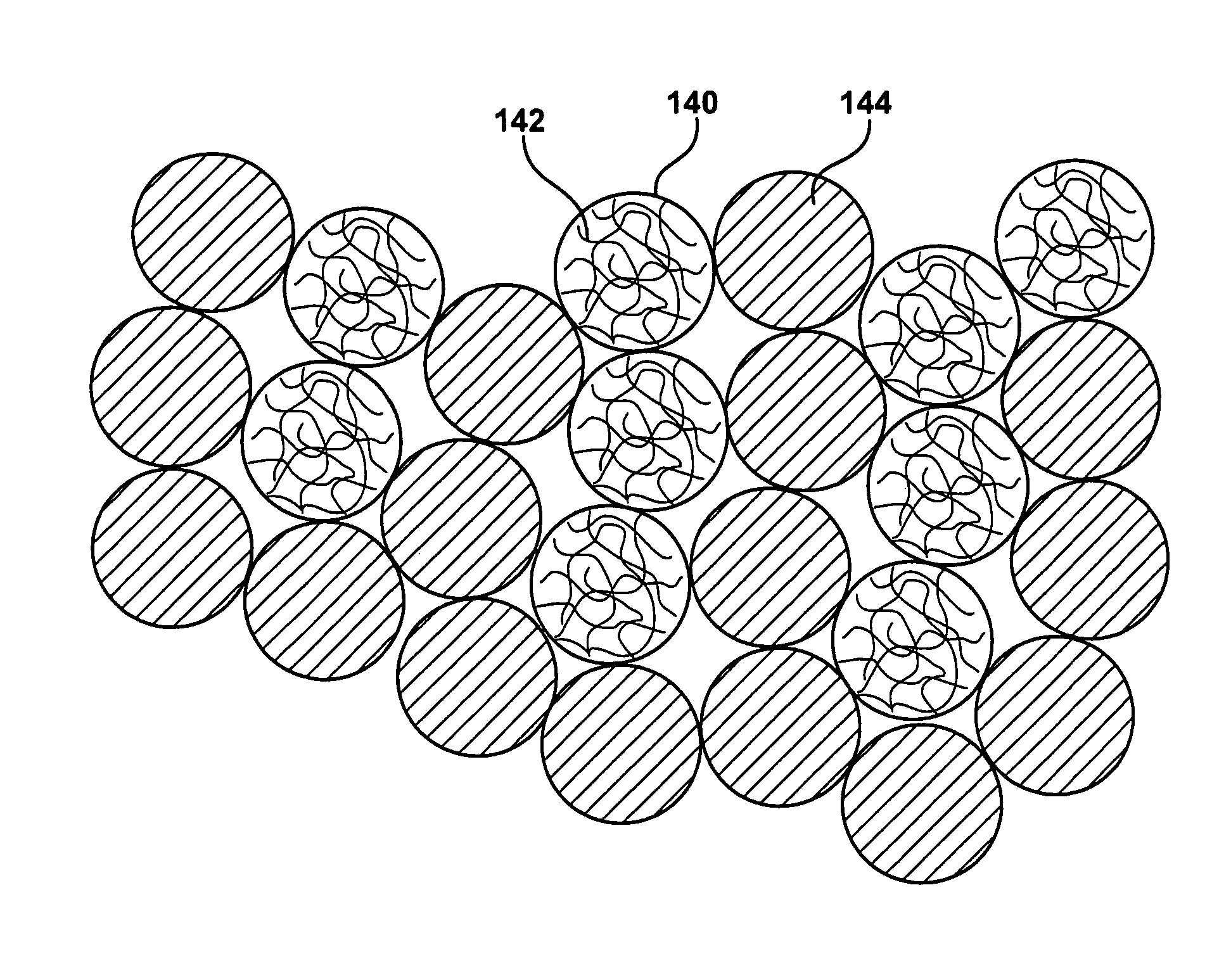Nanostructured bulk thermoelectric material
a thermoelectric material and nanostructure technology, applied in the direction of thermoelectric device junction materials, thermoelectric device manufacturing/treatment, basic electric elements, etc., can solve the problems of increasing zt, low-cost thermoelectric devices, and conventional semiconductor device fabrication methods that are unsuitable for manufacturing bulk samples, etc., to achieve the effect of improving the merit figure of thermoelectric components
- Summary
- Abstract
- Description
- Claims
- Application Information
AI Technical Summary
Benefits of technology
Problems solved by technology
Method used
Image
Examples
example 1
[0088]Porous silica templates were prepared using surfactants as porogens. The surfactants used included PLURONIC surfactant P123 (EO20PO70EO20), F127 (EO100PO70EO100), Brij-58 (C16H33EO20), and cetyltrimethylammoniumbromide (CTAB), where EO and PO designate ethylene and propylene oxide, respectively. The templates were prepared using the surfactant templating process. The average pore diameters of the pores templated with F127, P123, Brij-58, and CTAB were around 12, 9, 6, and 2 nm respectively.
[0089]Bismuth telluride was deposited using a three-electrode deposition circuit. 0.075 M bismuth and 0.1 M telluride dissolved in 1M HNO3 solutions were used as the precursor solution and electrolyte. The deposition was conducted at 0.1 V vs. Ag / AgCl using an Ag / AgCl reference electrode and a Pt counter electrode. The deposition was conducted at room temperature.
[0090]XRD pattern and TEM observation confirmed that Bi2Te3 nanowires with diameter about 6 nm, 9 nm, and 12 nm were deposited wit...
example 2
[0093]A xerogel mesoporous silica was fabricated by using sol-gel technique with PLURONIC surfactant P123 as template. The pore diameter of the as-prepared silica with hexagonal mesostructures was about 9 nm. The precursor solution of Bi2Te3 was prepared by dissolving 0.0225 mol Te and 0.015 mol Bi(NO3)3·5H2O in 150 mL 6 M HNO3 at 60° C.
[0094]5 g powder of xerogel mesoporous silica was added to 7 mL precursor solution. The sample was placed in liquid nitrogen for 3 min. After degassing by vacuum, the sample was warmed to room temperature. Silica powder was separated from precursor solution by centrifugation and then heated at 100° C. in vacuum to remove the solvent. Three and eight cycles of the above process have been conducted in order to increase the loading of bismuth telluride inside the mesoporous materials.
[0095]After infiltration, mesoporous silica with Bi2Te3 precursor was put into tube furnace. With flowing hydrogen, the temperature was increased to 450° C. and kept at thi...
PUM
| Property | Measurement | Unit |
|---|---|---|
| diameter | aaaaa | aaaaa |
| diameter | aaaaa | aaaaa |
| diameter | aaaaa | aaaaa |
Abstract
Description
Claims
Application Information
 Login to View More
Login to View More - R&D
- Intellectual Property
- Life Sciences
- Materials
- Tech Scout
- Unparalleled Data Quality
- Higher Quality Content
- 60% Fewer Hallucinations
Browse by: Latest US Patents, China's latest patents, Technical Efficacy Thesaurus, Application Domain, Technology Topic, Popular Technical Reports.
© 2025 PatSnap. All rights reserved.Legal|Privacy policy|Modern Slavery Act Transparency Statement|Sitemap|About US| Contact US: help@patsnap.com



